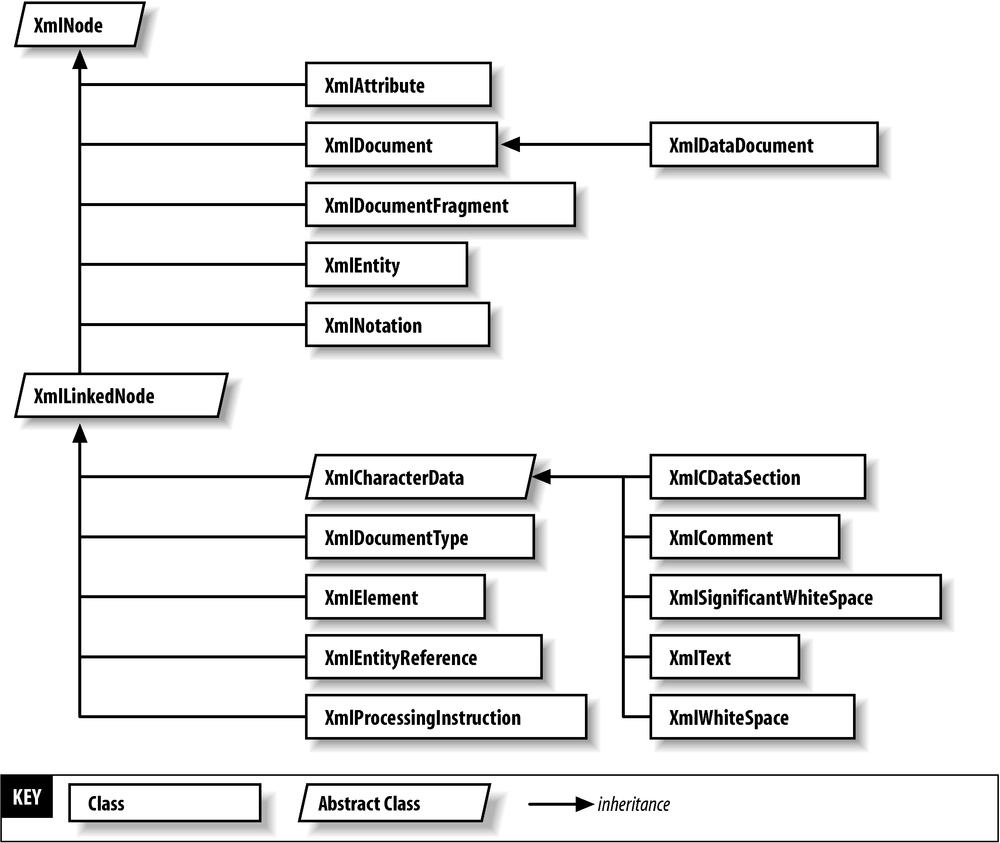The XmlNode Type Hierarchy
Because
the .NET Framework provides a complete Level 2 Core implementation,
the standard node inheritance tree is available. As
you’ll recall from Chapter 1,
each node in an XML document is represented by an appropriately named
class, starting with the abstract base class,
XmlNode. Look at Figure 5-2 and
compare the XmlNode inheritance hierarchy to the
DOM Node inheritance hierarchy in Figure 5-1. You should see that every DOM type maps to
exactly one .NET XmlNode subclass, although some
XmlNode subclasses do not have an equivalent DOM
type.

You can also see in Figure 5-2 that the .NET Framework inserts some
additional levels of inheritance in the DOM hierarchy. These
additional types provide a place for groupings of common
functionality (XmlLinkedNode) as well as adding
some functionality that is not required by the DOM specification
(XmlWhitespace,
XmlSignificantWhitespace).
The .NET DOM implementation provides intuitive names, similar enough to the relevant DOM interface to understand without further comment. In most cases, there is a one-to-one relationship between a DOM interface and the .NET implementation; however, Table 5-1 lists the exceptions to that rule.
|
DOM interface |
.NET implementation |
Notes |
DOMString |
String |
The DOM recommendation specifies that a language ... |
Get .NET & XML now with the O’Reilly learning platform.
O’Reilly members experience books, live events, courses curated by job role, and more from O’Reilly and nearly 200 top publishers.

